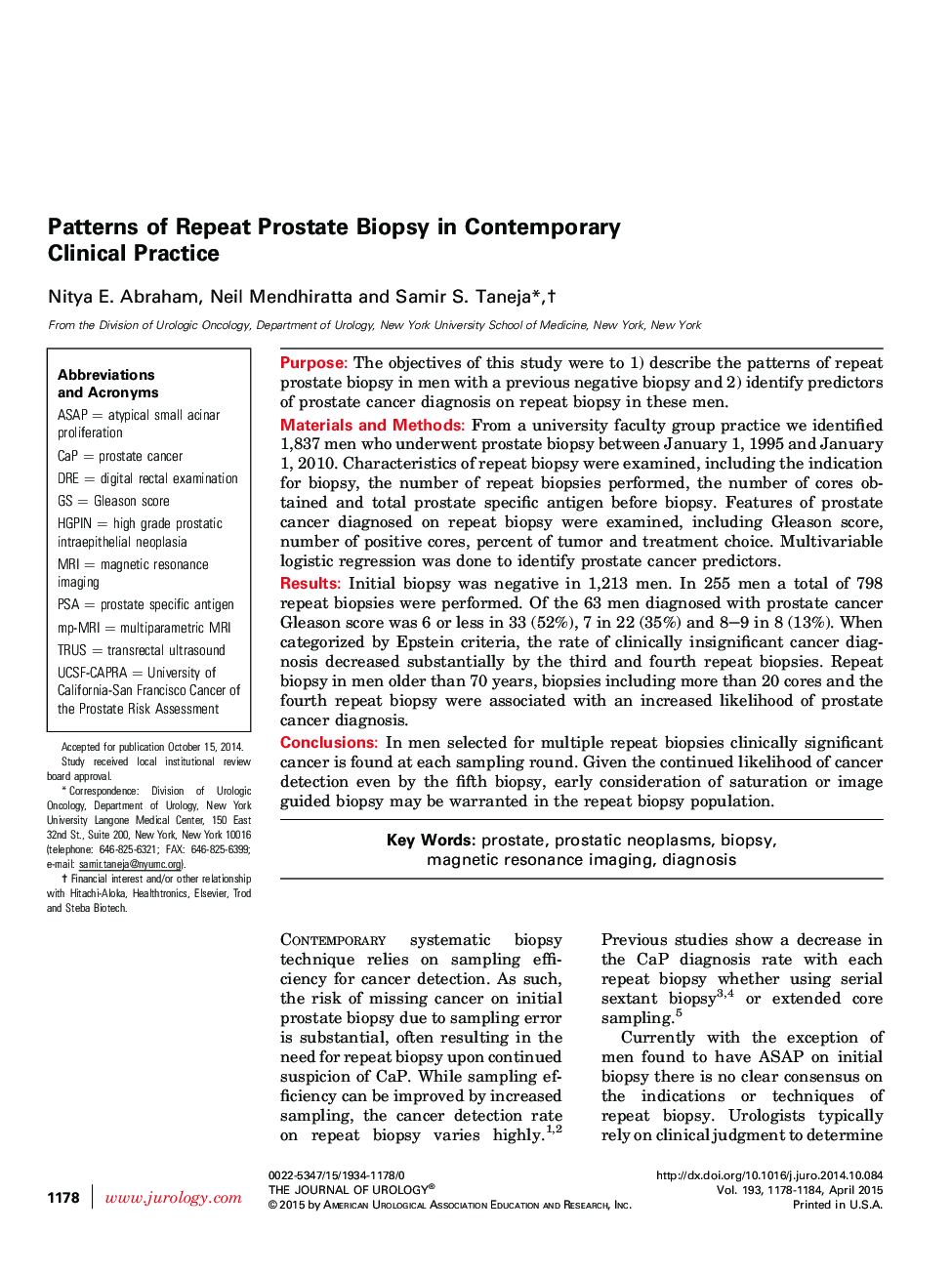| Article ID | Journal | Published Year | Pages | File Type |
|---|---|---|---|---|
| 3861518 | The Journal of Urology | 2015 | 7 Pages |
PurposeThe objectives of this study were to 1) describe the patterns of repeat prostate biopsy in men with a previous negative biopsy and 2) identify predictors of prostate cancer diagnosis on repeat biopsy in these men.Materials and MethodsFrom a university faculty group practice we identified 1,837 men who underwent prostate biopsy between January 1, 1995 and January 1, 2010. Characteristics of repeat biopsy were examined, including the indication for biopsy, the number of repeat biopsies performed, the number of cores obtained and total prostate specific antigen before biopsy. Features of prostate cancer diagnosed on repeat biopsy were examined, including Gleason score, number of positive cores, percent of tumor and treatment choice. Multivariable logistic regression was done to identify prostate cancer predictors.ResultsInitial biopsy was negative in 1,213 men. In 255 men a total of 798 repeat biopsies were performed. Of the 63 men diagnosed with prostate cancer Gleason score was 6 or less in 33 (52%), 7 in 22 (35%) and 8–9 in 8 (13%). When categorized by Epstein criteria, the rate of clinically insignificant cancer diagnosis decreased substantially by the third and fourth repeat biopsies. Repeat biopsy in men older than 70 years, biopsies including more than 20 cores and the fourth repeat biopsy were associated with an increased likelihood of prostate cancer diagnosis.ConclusionsIn men selected for multiple repeat biopsies clinically significant cancer is found at each sampling round. Given the continued likelihood of cancer detection even by the fifth biopsy, early consideration of saturation or image guided biopsy may be warranted in the repeat biopsy population.
